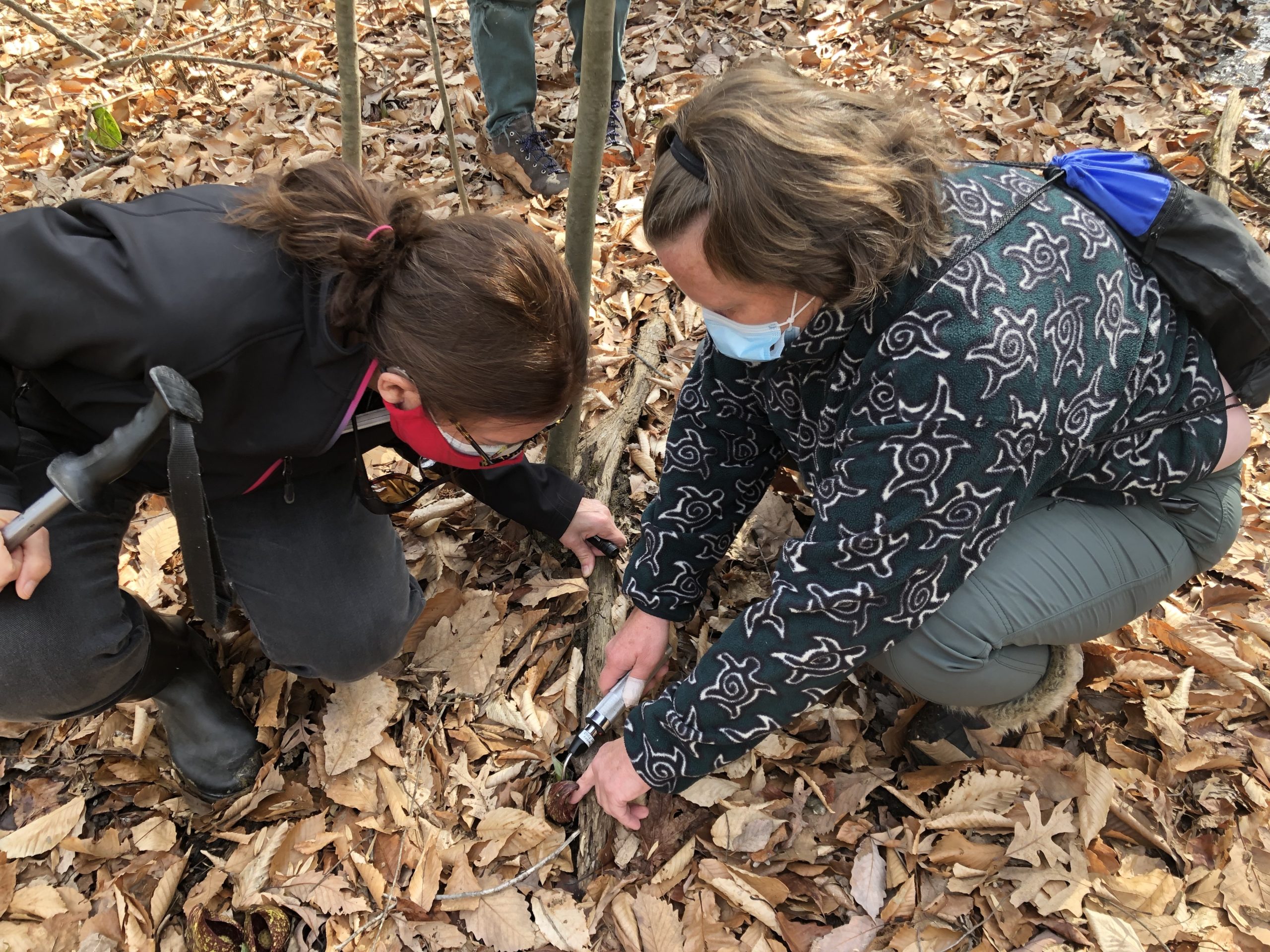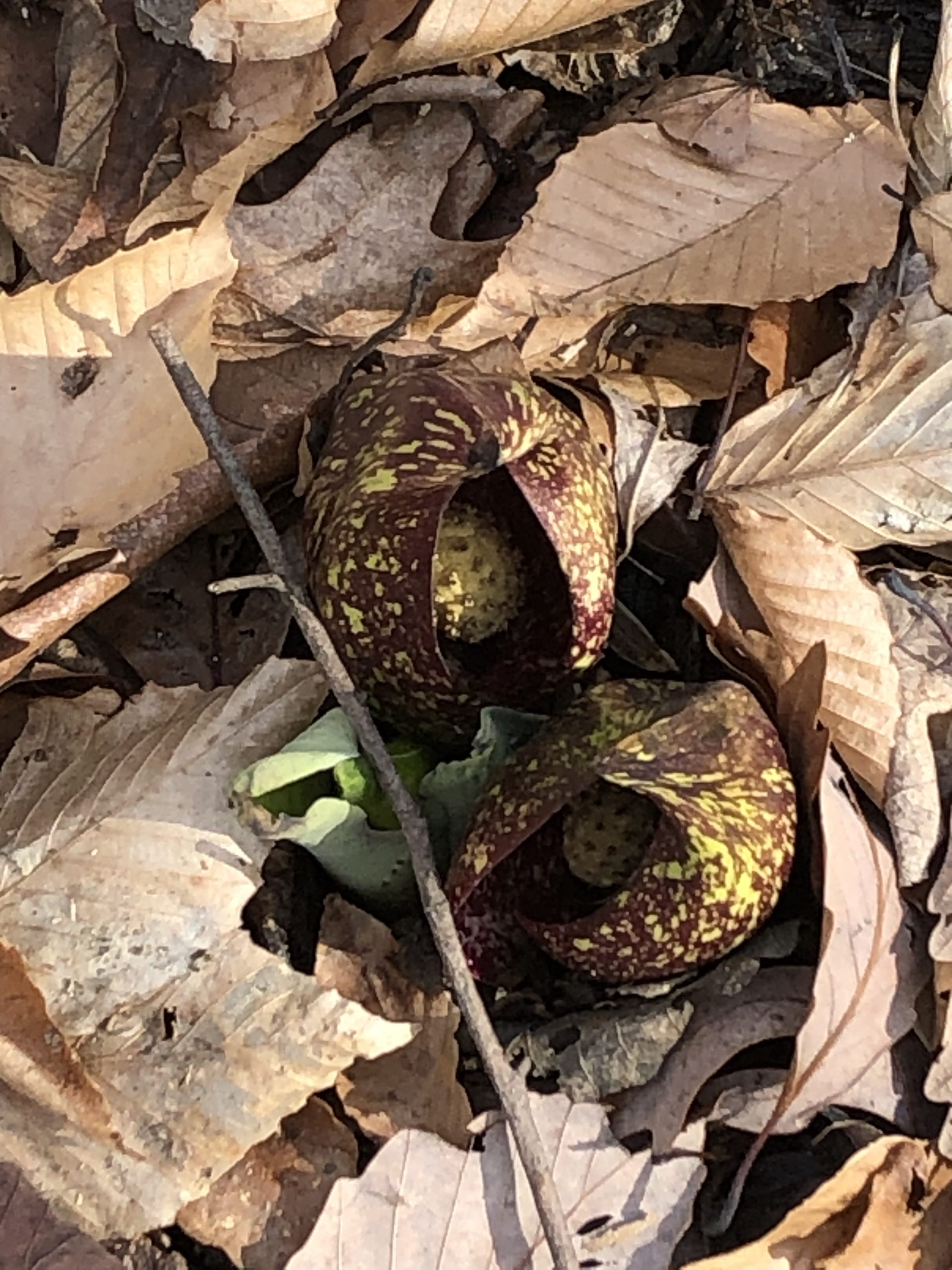A Smelly Harbinger of Spring


By Susan Nolan
You won’t find them in a bridal bouquet or in the centerpiece of a dining room table, but the eastern skunk cabbage, Symplocarpus foetidus, is, indeed, a flower—and if you venture into the swampier areas in Maryland right now, you may get to see them in full bloom.
Considered the first flower of spring, the skunk cabbage is common in eastern Canada and the northeastern United States. Its range extends southward to North Carolina and Tennessee and westward to Minnesota. While it typically blooms late February through April, in the relatively mild climate of Maryland, they begin to break through the soil in January. By March, unpollinated flowers are decomposing and the pollinating ones are bearing fruit.
“Skunk cabbage thermoregulates,” explains Siobhan C. Percey. “They not only produce their own heat, they control their heat production depending on the temperature of the surrounding area.” The plants maintain a temperature between 68 and 72 degrees Fahrenheit for about two weeks, even when their environment is frozen.
Percey is a veterinarian, naturalist, and local skunk cabbage expert. Every January, she leads a skunk cabbage hike through the wetlands of Jug Bay in southern Anne Arundel County. Recently, she led a group from the Annapolis-based Café Scientifique on a hike in Arnold.
On a mild day in February, the woodland floor and low-lying wetlands are covered in dried, brown leaves making it somewhat easy to spot the colorful skunk cabbage blossoms and their bright green shoots that have yet to unfurl. The flower itself consists of a thick, mottled maroon hood called a spathe and the spadix, a fleshy knob-like center that will change from a pinkish purple to a bright yellow in the course of a couple of weeks.
“I believe thermoregulation is primarily a heat reward for pollinators,” says Percey. “Pollinators are attracted to the skunk cabbage flower because the heat contained in the spathe allows them to expend less of their own energy to warm their muscles for flying. Inadvertently, while they are in the spathe, they become covered with pollen and carry that pollen on to the next flower they visit.”
As a protogynous flower, the skunk cabbage flower begins its bloom as female (pinkish purple) but transitions to male (yellow) allowing skunk cabbage plants to cross-pollinate.
“Not all flowers play by the rules,” Percey explains as she shows the group a blossom in which the spadix is still purple, but it has clearly sprouted the male anthers indicating it will soon be mature enough to release pollen. If a female flower is pollenated, it will produce fruit, and therefore seeds. Later, as male, it will release its own pollen. Once the flowers are gone, the foliage takes over—its large, green leaves will cover the woodland floor in spring and summer.
Despite its name, the skunk cabbage is not related to the leafy vegetable you find in the grocery store. Recipes for skunk cabbage are available online, but according to Percey, eating it is ill-advised. Skunk cabbage contains calcium oxalate crystals that deter predators and can be toxic to humans. “It’s likely to burn your mouth,” says Percey.
Of course, the most common question about skunk cabbage is, “Does it stink?” The bruised leaves can emit a foul odor. You will want to look carefully and tread lightly when hiking through those low marshy areas.
